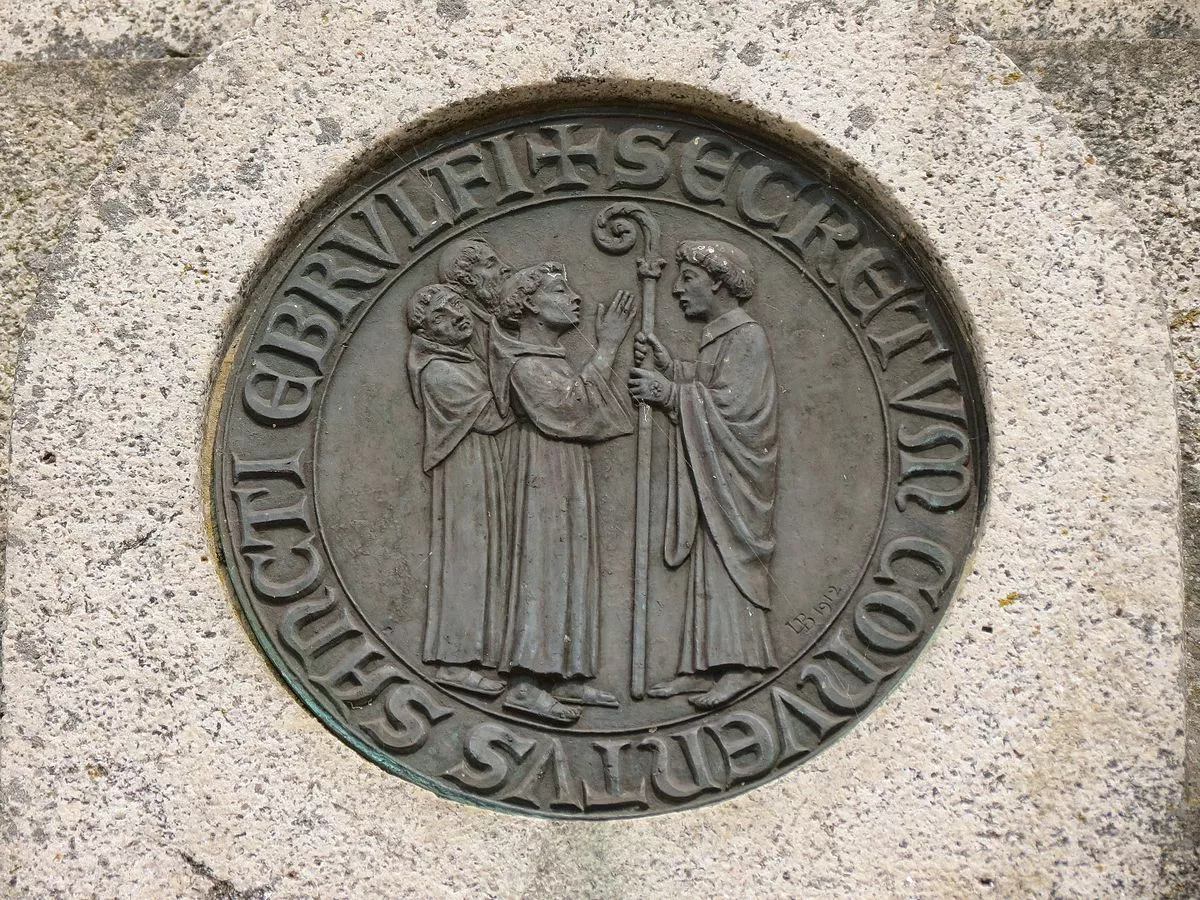 1.
1. Orderic Vitalis was an English chronicler and Benedictine monk who wrote one of the great contemporary chronicles of 11th- and 12th-century Normandy and Anglo-Norman England.

 1.
1. Orderic Vitalis was an English chronicler and Benedictine monk who wrote one of the great contemporary chronicles of 11th- and 12th-century Normandy and Anglo-Norman England.
Orderic Vitalis was followed by his two younger brothers Benedict and Everard.
Orderic Vitalis was one of the few monks who were of mixed parentage as his mother was of English heritage.
When Orderic Vitalis was five, his parents sent him to an English monk, Siward by name, who kept a school in the Abbey of SS Peter and Paul at Shrewsbury.
Orderic Vitalis received from Siward a basic education in reading and writing as well as the history of the English people.
At the age of ten, Orderic Vitalis was entrusted as an oblate to the Abbey of Saint-Evroul in the Duchy of Normandy, which Montgomery had formerly despoiled but, in his later years, was loading with gifts.
Orderic Vitalis did not know a word of French when he reached Normandy.
When Orderic reached the legal age for profession as a monk, his monastic superiors gave him the religious name of "Vitalis" because they found it difficult to pronounce his English baptismal name of Orderic, a name he says was the same as the priest who baptised him.
Orderic Vitalis became a deacon in 1093, and a priest in 1107.
Orderic Vitalis left his cloister on several occasions, speaking of having visited Croyland, Worcester, Cambrai and Cluny Abbey.
Orderic Vitalis turned his attention at an early date to literature, and for many years appears to have spent his summers in the scriptorium.
Orderic Vitalis added information about earlier periods from other sources, for example William of Poitiers' Gesta Guillelmi, and included information not found elsewhere.
At some time between 1110 and 1115, Orderic Vitalis's superiors ordered him to write the history of Saint-Evroul.
Orderic Vitalis is a vivid narrator; his character sketches are admirable as summaries of current estimates.
Orderic Vitalis's narrative is full of digressions that surprise readers who expect a strictly chronological ordering of events, but it has been argued that the digressions reflect Orderic's sense of the connections between events and his desire to include as much of his monastic colleagues' memories in his History as possible.
The historian Marjorie Chibnall states that Orderic Vitalis used now-lost pancartes of various Norman monastic houses as sources for his historical writings.
Orderic Vitalis addressed both contemporaries and future generations, intending for his work to be studied by monks and novices learning about the history of the monastery and its benefactors.
Orderic Vitalis echoed the reasoning of William's conquest while still taking issue with several aspects of the conquest.
Orderic Vitalis spoke on the role of clerics in the battlefield.
Orderic Vitalis emphasized his reasoning for only contributing to violence on behalf of the king, laymen, or other clerics.
When her uncle, William, Count of Everux, arranged for Bertrade to marry Fulk of Anjou, Orderic Vitalis wrote disparagingly of Fulk's character in recognition of how she was being used for the sake of power.